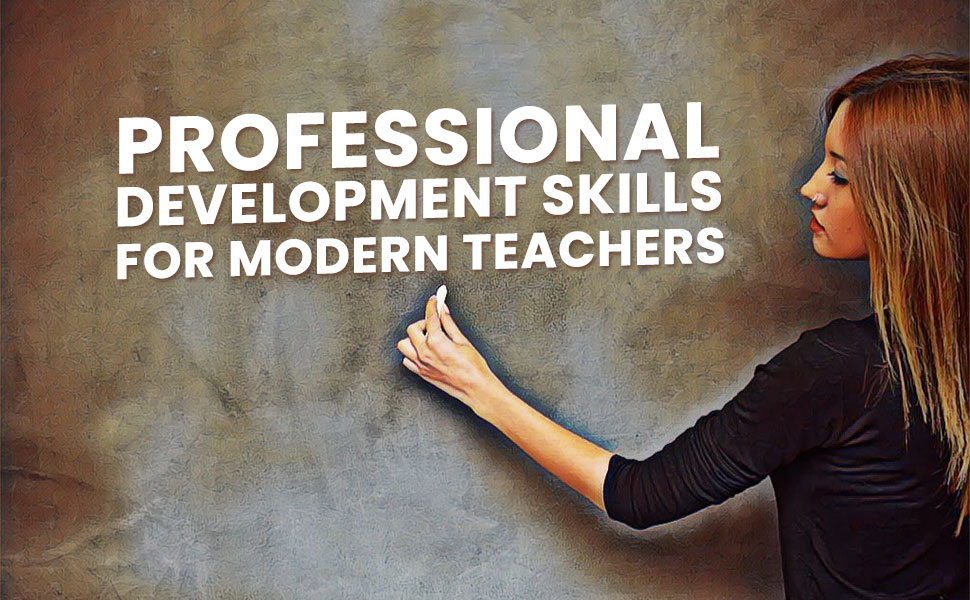Professional skills development techniques are ways for teachers to increase professional knowledge and training in their subject area. These techniques can help teachers become more effective in the classroom and engage students better.
What is Professional Development for Teachers?
Professional Development for Teachers refers to the ongoing process of learning and growth that teachers engage in to improve professional skills for their teaching practices, subject matter knowledge, and skills. This can include various activities such as attending workshops, participating in online courses, attending conferences, or working with a mentor.
The professional development skills goals for teachers are to help teachers stay current with new educational research and best practices and to support them in continuously improving their teaching skills and effectiveness. Ultimately, Professional Development for Teachers aims to improve student outcomes and support the success of all learners.
Benefits – Why is Professional Development Important?
1. Improving Subject Knowledge:
Professional development techniques provide teachers with training and workshops on new teaching methods and technology integration. Which can help them gain a deeper understanding of their subject matter.
2. Developing New Skills:
By participating in professional skills development techniques, teachers can develop new skills to help them engage and motivate students in the classroom.
3. Positive Impact on Students:
Research has shown that well-trained and supported teachers can positively affect students’ learning and engagement.
Professional Development Plan for Teachers
Several key Professional Development Plans for Teachers can make effective and engaging:
1. Relevance:
Development opportunities should be relevant to teachers’ needs and interests and align with their school or district’s specific goals and objectives.
2. Active Participation:
Effective development is often hands-on and interactive, allowing teachers to engage in meaningful learning experiences and increase professional knowledge and training skills in real-world scenarios.
3. Collaboration:
Opportunities for teachers to collaborate with their peers and work together to solve problems and share best practices can enhance the learning experience and foster a supportive professional community.
4. Time for Reflection:
Providing teachers with opportunities to reflect on their experiences and think about how they can apply new learning in their classrooms can help increase development’s impact.
5. Sustainability:
To ensure the benefits of professional development skills are sustained over time, schools and districts should provide ongoing support and opportunities for teachers to continue learning and growing.
6. Use of Technology:
Incorporating technology into development can enhance engagement and make learning more interactive and accessible.
7. Focus on Learning Goals:
Set clear and specific professional development goals and ensure that they align with the teacher’s needs and the needs of the students.
8. Use a Variety of Formats:
Offer development in a variety of forms, such as workshops, online courses, coaching, and mentoring, to cater to different learning styles and preferences.
9. Foster Collaboration:
Encourage teachers to collaborate with their peers and engage in discussions and problem-solving activities. This helps them to learn from each other and develop a sense of community.
10. Provide Hands-on Learning Opportunities:
Offer teachers opportunities to apply their new knowledge and skills in real-life situations. This helps to build confidence and reinforces their understanding.
11. Encourage Reflection:
Encourage teachers to reflect on their practices and the impact of their development on their teaching and student learning.
12. Evaluate Effectiveness:
Regularly evaluate the effectiveness of development programs to determine if they are meeting the needs of teachers and the school or district’s goals.
13. Continuously Offer Opportunities:
Make development a continuous process by providing ongoing opportunities for teachers to learn and grow.
By considering these strategies, schools, and districts can create compelling and engaging development experiences that support teachers in continuously improving their skills and effectiveness.
Conclusion
It is important to remember that professional development skills are not a one size fits all solution. Different teachers will have different needs and preferences. It is up to each teacher to determine the most effective techniques for them.
The use of professional skills development in teaching children has the potential to have a positive impact on both teachers and students. Providing teachers with the support and training they need to be effective in the classroom can help ensure that students receive a high-quality education.



